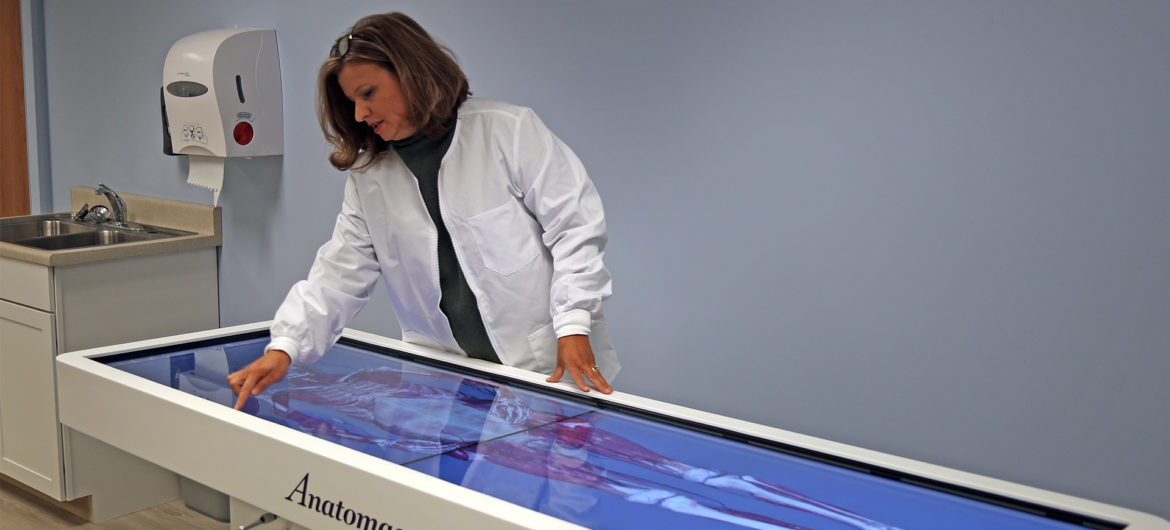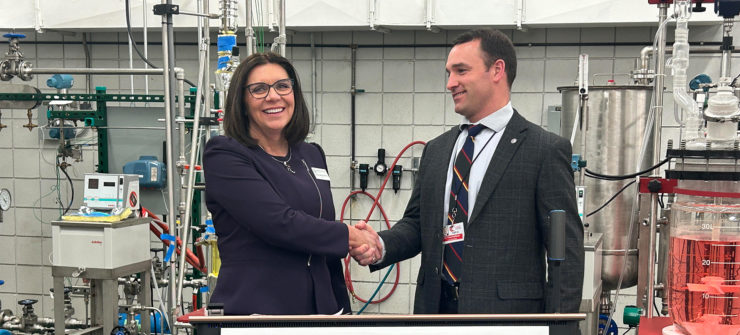MARIETTA, OHIO (December 13, 2018)—Washington State College of Ohio recently purchased a unique piece of innovative equipment that will bring anatomy classes to life.
The Anatomage Table is a technologically advanced anatomy visualization system. While it looks like something straight out of a futuristic science fiction movie, it is, in reality, FDA approved and used by the world’s leading medical schools. In fact, WSCO is one of only three community colleges in the entire state of Ohio to own this innovative equipment.
“This is state-of-the-art equipment that provides us with a perfectly accurate touchscreen three-dimensional view of the human body,” describes Dr. Heather Kincaid, Dean of WSCO’s Health & Sciences division.
The table is essentially a fully interactive life-sized tablet with magnification and rotation features that provides a realistic human anatomy presentation. It is loaded with software that gives the user the means of performing a digital dissection of a body and is equipped with a library of different human cadavers that simulate an array of conditions and illnesses. It can also serve as a clinical diagnostic tool by showing an assortment of medical scans. “This is an amazing tool that we will use to augment the classroom experience,” said Kincaid. “If you want to learn about the dermis, skeletal structure, the vascular system, whatever, with a simple touch of the screen you can be there.”
While the equipment was a major purchase of $100,000, it was an investment that the institution saw as essential. “Through funding we received from the Regionally Aligned Priorities in Delivering Skills (RAPIDS) grant, the college acquired this equipment because we saw the immediate and long-term value it would bring to our classrooms,” explained Kincaid. The table will be used to complement the curriculum for health sciences and biology classes. And while the device is a good alternative to using an actual cadaver, Kincaid assures it will not be replacing the College’s cadaver lab. “There are still facets of learning that a digital human representation cannot replace.”
The high-tech device was installed mid-fall and faculty spent the remainder of the semester being trained on its extensive technical applications. The table will be integrated into classroom curriculum beginning next semester. In the meantime, the College is developing a lab that will be solely dedicated to the equipment. Long-term, Kincaid said there is opportunity to add greater value to the table with the addition of peripherals such as large monitors that will project the table’s images around the classroom.





